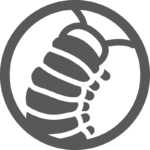Our Indiana Native Plant Finder database tool will help you choose garden-worthy Indiana native plants that fit your site and support pollinators. Use the dropdown menus to select plant types and desired characteristics, and a filtered search will generate an array of plants for you. Enter as many filters as you like; to narrow your search, select more filters and search again. Click on a plant to link to a printable species page with plant characteristics, notes, resources, and additional photos.
Development and Purpose
Originally focused on garden-worthy Indiana native plants and their relationships to pollinators, this database has grown to include as many Indiana native plants as we can find data for, even those that are wind pollinated. Our aim is to provide gardeners, landscapers, restoration specialists, botanizers, school children, and the interested public with a reliable source of information about plants native to Indiana and photos showcasing their beauty. The database will continue to grow as we obtain photos and information about additional Indiana native plants. We welcome your comments and suggestions at finder@indiananativeplants.org.
About the Filters
The main menu contains the obvious filters: by plant type, light, moisture, bloom color, season, etc.
Additional filters are available under Notable, including aquatic, container friendly, pollinator magnet, caterpillar magnet, garden-friendly, groundcovers, deer resistant.
When you select filters, a capsule-shaped element will show below the main menu to indicate which filters are active. Click the “x” to cancel a filter.
Filter shortcuts:
https://finder.indiananativeplants.org/?choices=Shrubs <–Filters the page to show all shrubs.
https://finder.indiananativeplants.org/?choices=Shrubs%7CWhite <–Returns all the shrubs with white flowers
Plant Types
The database captures a selection of trees, shrubs, grasses/sedges, ferns, and wildflowers. Smaller trees typically found in the forest understory are included in the shrub category. We used these resources to verify plant needs and characteristics.
Ferns: Michael Homoya, Wildflowers and Ferns of the Indiana Forest: A Field Guide
Trees: Marion T. Jackson, 101 Trees of Indiana: A Field Guide
Shrubs and Vines: Sally S. & Harmon P. Weeks, Shrubs and Woody Vines of Indiana and the Midwest: Identification, Wildlife Values, and Landscaping Use
Grasses/Sedges: Paul Rothrock, Sedges of Indiana and the Adjacent States, Volumes 1 and 2. Grasses reference TBD.
Wildflowers: Kay Yatskievych, Field Guide to Indiana Wildflowers.
Individual Plant Search
If you know the name of a specific plant you want to find, enter the Latin scientific name. You can also search on the common name, but the database captures only the most common of these names.
Plant Height
A slider enables you to select minimum and maximum heights to generate a range of plants falling within those parameters.
Pollinators
The database notes these pollinators: bees, beetles, flies, hummingbirds, butterflies/moths, and wasps. Data on these insect associates is collected from various sources.
Pollinator Magnets
 Plants designated as Pollinator Magnets are known to attract an abundance of pollinators, or a very high diversity of pollinators, based on literature and field experience. These plants are the most likely to be buzzing with a great number of insects on the flowers.
Plants designated as Pollinator Magnets are known to attract an abundance of pollinators, or a very high diversity of pollinators, based on literature and field experience. These plants are the most likely to be buzzing with a great number of insects on the flowers.
Caterpillar Magnets
 Doug Tallamy’s research into plants that support the most native lepidoptera species (butterflies and moths) suggests which can be called Caterpillar Magnets. The highest numbers of species for which these plants are larval hosts are the woody plants (trees and shrubs); those designated Caterpillar Magnets support from 100 to 500 species. Wildflowers so designated support 27 to 117 species. Research in prep by Shropshire and Tallamy provides numbers for Hendricks County, which should be representative for Indiana.
Doug Tallamy’s research into plants that support the most native lepidoptera species (butterflies and moths) suggests which can be called Caterpillar Magnets. The highest numbers of species for which these plants are larval hosts are the woody plants (trees and shrubs); those designated Caterpillar Magnets support from 100 to 500 species. Wildflowers so designated support 27 to 117 species. Research in prep by Shropshire and Tallamy provides numbers for Hendricks County, which should be representative for Indiana.
Garden-Friendly
 These are plants that can be used to good effect in a designed landscape. They are our showier, more well-behaved natives that can stand on their own or mingle happily with noninvasive exotic garden plants.
These are plants that can be used to good effect in a designed landscape. They are our showier, more well-behaved natives that can stand on their own or mingle happily with noninvasive exotic garden plants.
Light
Observe your planting site to determine the quality of sunlight it has to offer your plants, and choose plants accordingly.
Full sun: 6 to 8 hours of direct sunlight a day, typically between 10:00 a.m. and 4:00 p.m.
Part shade: 4 to 6 hours of direct sunlight a day.
Shade: Few plants thrive in deep shade. Most require 4 hours of full sun morning or late afternoon, or a full day of light, dappled shade.
Moisture
These terms are used to describe habitat in which plant species thrive. Landscaping and restoration should match plants’ moisture needs to site conditions.
Wet (hydric): Soil permanently or seasonally saturated by water, resulting in anaerobic conditions, as found in wetlands.
Wet/Medium: Ranging from hydric to mesic.
Medium (mesic): Soil that has a moderate or well-balanced supply of moisture, as in a temperate hardwood forest.
Medium/Dry: Ranging from mesic to xeric.
Dry (xeric): Soil that receives less than 10 inches of water a year, where evaporation exceeds rainfall, as in shrublands and deserts.
Bloom Color
Bloom color is a tricky subject, so be guided only in a very general way by this filter. Many plants bloom in a range of colors through natural variation. For bicolors like columbine, we list the two colors individually. You can filter on a specific color but rely on the photographs to find your color sweet spot.
Season of Bloom
Bloom seasons are loosely categorized as spring, summer, and fall. In time, we may make finer distinctions so gardeners can arrange to have things blooming throughout the season for the benefit of wildlife associates.
Photos
Plant photos are the stars of our database! We have assembled them from INPS Photo Contests, from the IU Herbarium, and especially from the INPS Facebook group, which showcases the amazing talents of our homegrown photo artists. If you wish to share a photo, be sure to credit the photographer.

